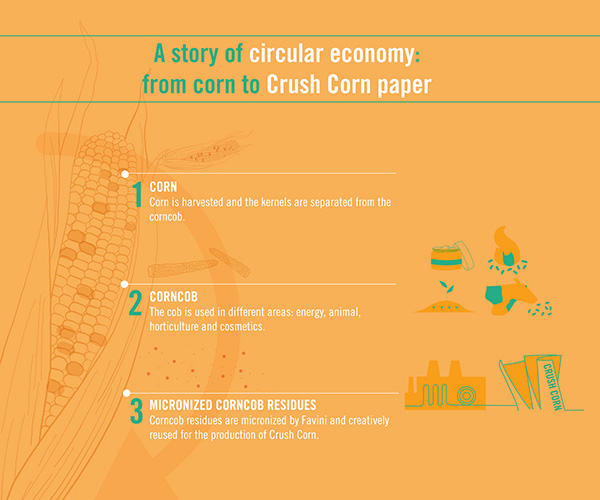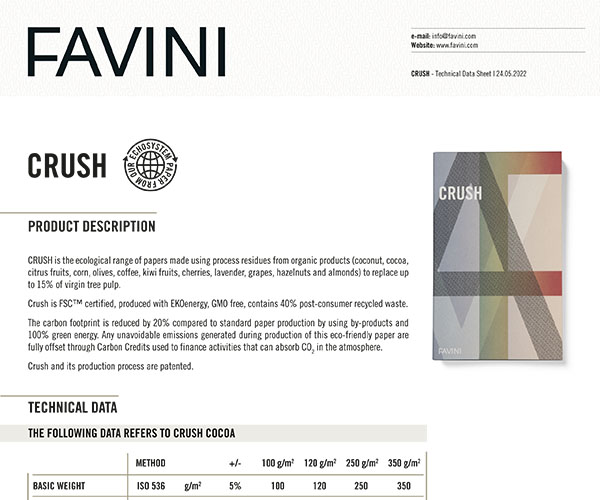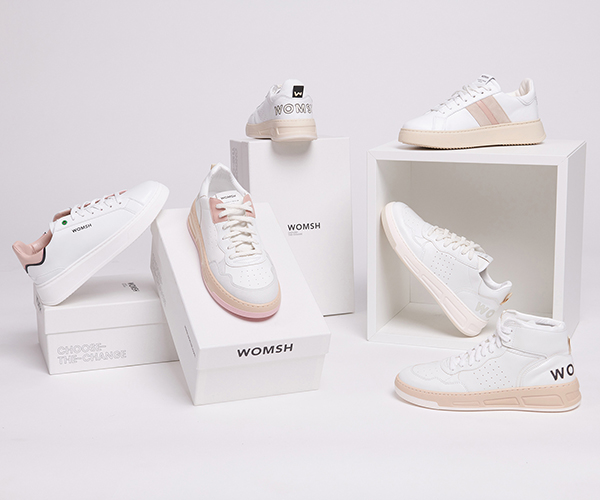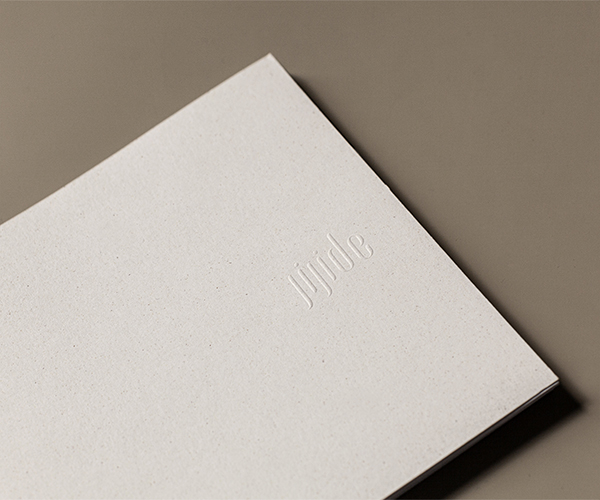Within an efficient and ethical supply chain and following the principles of the circular economy, natural products used by the agri-industrial sector and their subsequent processing creates by-products which are recovered by Favini and used to produce high quality and eco-sustainable paper.
Following the recent posts dedicated to coffee, citrus, lavender and cherry, today we will reveal the life cycle of corn used for the production of Favini’s ecological paper Crush.
Corn, the crop obtained from corn cultivation, is used in different ways:
In human nutrition, consumed in the form of corn kernels or as grain that is subjected to industrial processing to produce for example cornflakes, popcorn, corn flour, corn oil, for animal feed, to produce biodegradable plastics, for starch, for energy.
In 2015, 40% of the US corn crop was in fact destined for energy production.
Let’s discover together through the life cycle of corn, the Crush Story from corn field to Crush Corn the ecological paper from Favini.
Crush Story Corn: A circular economy case history from corn field to eco-sustainable paper

Corn is one of the most imported cereals in the world and is widely cultivated both in tropical and temperate regions. The indigenous people of Mexico cultivated it about 10,000 years ago and thanks to Christopher Columbus, corn arrived in Europe. During the first decades of the sixteenth century it spread from the Iberian Peninsula across Southern France into Northern Italy and the Balkans.
Amongst all the agricultural crops, corn is the one that more than any other has been able to adapt to different agronomic environments and it is for this reason that it represents an irreplaceable source for direct use as well as for industrial processing.
To tell the story of corn and its by-product used in the production of Crush Corn paper, we start in the fields. From the corn plants, once sown, irrigated and cultivated, the cobs are harvested in the summer period and they are then dried and shelled.
The grain is separated from the corncob. This by-product is generated by the shelling process and is reused in different ways.
In the production chain of corn, the corncob is a by-product that has interesting features for its reuse in different areas: for energy use, as a raw material for animal fodder and for industrial uses; as a base for the production of absorption granules for friction finishing and sandblasting; as pet litter and a substrate for horticulture, it is also used in cosmetics for absorbing perfumes and essences.


Favini intervenes at this point, using the residues from corncob and elevating them from a waste material into a valuable raw material for the production of high quality ecological papers following the principles of circular economy.
Crush Corn has been created as the first paper to be made with by-products taken from the agri-industrial processing of corn using it to substitute up to 15% of tree cellulose. In addition to the by-product of corn, we also use the process residue from grape, lavender, citrus, cherry, olive, coffee, kiwi, hazelnut and almond.
Crush Corn Story continues: The eco-sustainable and recyclable paper for creative applications
The supply chain does not end with Crush ecological paper. This material developed and created by Favini by reusing micronized corncob residues is recyclable and ideal for creating different applications, which after their use can also be recycled to produce other papers.
The life cycle of packaging, catalogues, notebooks, invitations and creative projects will continue in successive production cycles according to a circular economy model.


For inspiration on Crush to produce your own creative projects see Crush’s Pinterest board.
Have you used our ecological Crush paper and would you like to share the result on our social media feed? Contact us at social@favini.com with your piece of circular economy history.
Continue to follow Crush Story:
- Crush Story: from citrus fruit to paper
- From bean to Crush Coffee
- From cherry tree to Crush Cherry paper
- From corn crop to Crush paper
- From vineyard to Crush Grape
- From nut kernels into Crush paper
- From field to Crush Barley
- From kiwi fruit to the ecological paper Crush
- From olive grove to the ecological paper Crush
- From the bean to Crush Cocoa
- From coconut to paper


